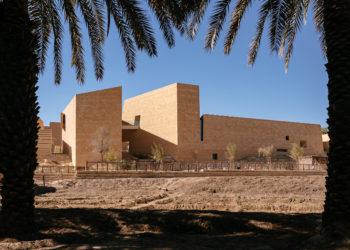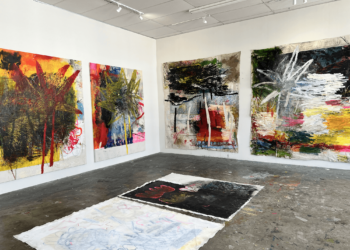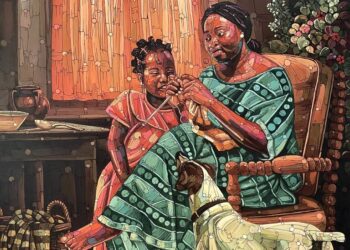ART AFRICA spoke to Tamara James about photography, surface and and the body in her latest body of work ‘Figures Within Outline,’ which can be seen at Candice Berman Fine Art gallery in Johannesburg.
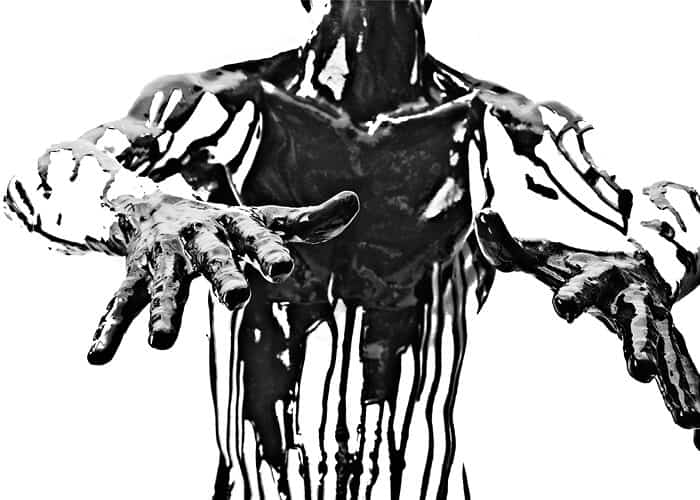 Tamara James, Exude, 2016. Photographic print on archival matt paper, 100 x 70 cm. All images courtesy of Candice Berman Fine Art.
Tamara James, Exude, 2016. Photographic print on archival matt paper, 100 x 70 cm. All images courtesy of Candice Berman Fine Art.
ART AFRICA: You began using pinhole photography whilst studying fine art, and have since experimented with a wide range of subjects, aesthetics, and photographic approaches. Where do you draw your inspiration from? Is it the medium itself?
Tamara James: I have always been what people call ‘arty’ and love any type of creative activity where I can get a bit messy. Painting, crafting, drawing with charcoal – these are all mediums that inspire me. The first time I was exposed to pinhole photography and watched one of my images slowly appear in the solitude of a dark room, my eyes were opened to a whole new art form. I suppose it is the combination of still being able to get my hands dirty and then capturing that in the simplicity of a photograph. I could see that fine art photography would be the perfect medium for me to express my creativity and still be able to play around with other mediums.
In a professional capacity you work as a commercial photographer, taking photos of weddings, family portraits, and events. How does your relationship to photography change when you approach fine art and do you feel the need to differentiate the two?
I was in the commercial world of photography. I tried it all; working for advertising agencies, portraits, babies, boudoir, and weddings. For a fair amount of time this was ok as I was still learning new techniques and honing my craft. The problem I found with the commercial world was the lack of freedom for me to express myself, having to deliver an expected outcome and work within the bounds of what a client wanted made me to make felt like I had lost what I truly loved from the beginning. I left the commercial world of photography to open up a jewellery business with my sister where I had the freedom to use my creativity while also allowing me to rekindle my love for photography.
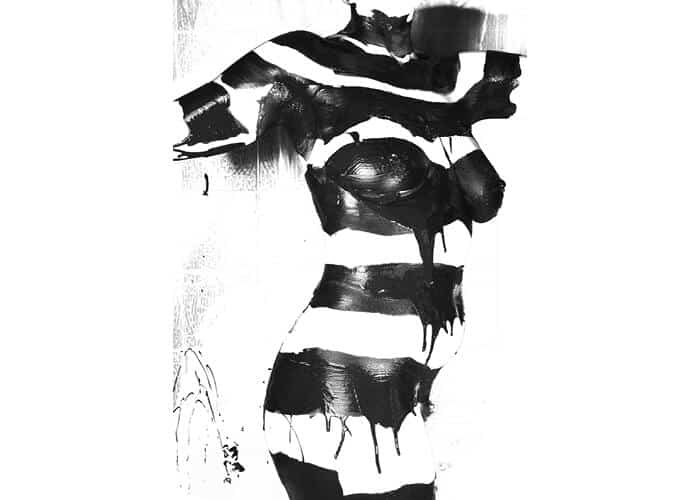 Tamara James, Striped Frontal, 2016. Photographic print on archival matt paper, 100 x 70 cm.
Tamara James, Striped Frontal, 2016. Photographic print on archival matt paper, 100 x 70 cm.
Please tell us about your latest body of work ‘Figures Within Outline’?
‘Figures within Outline’ is a body of work in which I began to explore shape and form. Through a combination of painting and photography I found it possible to capture the simplicity of the human form. Stripping the figure of race, personality, and flesh, allowing one to appreciate the simplicity of form without judgement and subjection. The use of colour is reserved to monochrome which accentuates the essence of form and emphasises the impression of the figures captured in fine details in contrast with what is not seen. The works are true to nature, where no photo editing or manipulation is incorporated in the form of the figures, transforming the body into a canvas, so to speak.
Despite the rather clinical execution, you make mention that none of these works were edited in postproduction. Is this element important to you – that the photos exist in their original form?
These images are edited in postproduction. I spend 6-8 hours working away everything but the paint on the original image. The figures themselves are not altered or manipulated. They might be flipped or duplicated but it was important for me to keep the models true form and not create a false figure.
Through the application of paint on skin, this body of work has a particular attention to surface. Even the title suggests this – an inside, an outside. What is it about this ‘coating’ of the human form that appeals to you?
From a young age I have always been intrigued by the human form. I find it to be beautifully elegant but at the same time extremely complex. ‘Figures Within Outline’ was my first attempt at experimenting with the concept of simplifying the human form. I suppose the ‘coating’ is a way of me making a simplified study of the human figure.
Why do you think you feel the need to ‘strip’ your subjects of “race, personality, and flesh” in order to “appreciate the simplicity of form without judgement and subjection?”
The world is filled with judgement and subjection, whether it be conscious or subconscious. I wanted to find a way for people to look at my work and see the beauty of the human form first without knowing anything else about the figure. By experimenting with stripping the figures of distinguishable elements I found a way to show off the beauty of the form of a figure which would ‘appeal’ to all.
I am currently working on ‘Figures Within Outline Part Two’, which will start to explore adding some of the ‘stripped’ elements back in. In a way I am still finding my feet and exploring. I cannot wait to see what I end up doing in five years from now, to compare my work and assess my growth.
